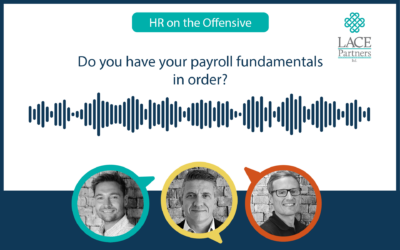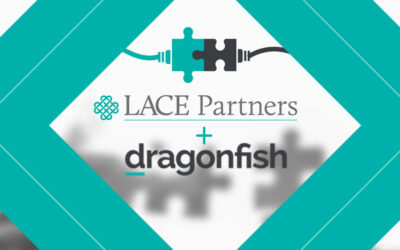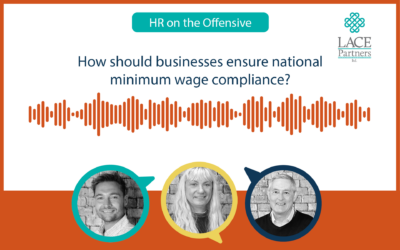Last week we co-hosted our latest insurance forum along with Sheridan Worldwide’s Caroline Sheridan. The aim was to discuss how the sector is keeping up with the changing needs of its workforce in these transformative times and some of the discussions were fascinating, so we decided to take some of the key summary points and release in our latest LACE Partners blog. We regularly run these forums as invitation-only breakfast briefings, networking lunches or dinners and they are run with a focus on intelligent discussion and sharing of ideas, rather than ‘death by PowerPoint. If you’re a HR professional in the insurance sector and would like to be part, fill in the form at the bottom of the page and we’ll be in touch.
From leadership messaging to tackling burnout, and from the four-day week to the need for exec/Board cohesion, the issues discussed provided food for thought for a sector that’s operating on shifting sands.
Here’s what we learned…
Change is the only constant – don’t expect a return to ‘normal’
The only certainties in life are death and taxes, to paraphrase Benjamin Franklin. We’d add ‘change’ to that list. Every sector is currently in a state of flux following a rough few years and it’s no different for insurance.
CEOs and executive leaders are undergoing a sustained period of rapid change. COVID threw challenge after challenge at a workforce already dealing with digitalisation and the pressures of increased competition.
Now we’re emerging from the other side of a period of uncertainty and consecutive lockdowns, many in the sector see COVID as a ‘fire break’ of transformation for businesses.
However, the burnout rate among teams is high and C-suite execs are now negotiating the ongoing challenges of hybrid workplaces and stressed employees. The new normal is here to stay and finding the right balance is now vital for HR teams and businesses.
Un-mixing leadership messaging
A key issue raised by some members of the group is the mixed messaging coming from CEOs. There is still a dogged resistance to change among some business leaders, along with a certain insistence on communicating through HR.
We heard that some CEOs feel they are marooned on an island and are forced to use HR as the communication conduit between them and the exec teams/wider workforce. Attendees also said that CPOs are acting as the guardrail for many Exec teams.
Mixed messaging regarding flexible working is causing unnecessary confusion for the workforce. Specifically, actions are not matching messaging. Often, senior business members prefer to follow traditional ‘in the office 24/7’ working patterns that clash with the message of remote and flexible options.
The pressure of assumed expectation that teams should do the same leads to resentment and a loss of trust in messaging. Senior leadership need to communicate in a different and more effective way regarding flexible working and expectations.
Making way for the new generation within Insurance
The insurance sector is still largely steeped in outdated demographic stereotypes, which presents awkwardly to the new generation entering the workforce.
People who are now entering the workforce have developed an entirely new way of learning. No longer predicated on the results of the individual, learning focuses on collaboration and communication. This means the sector must shift focus towards valuing productivity and output rather than collecting data on hours worked.
Supporting middle management to widen their leadership scope
Broadly speaking, there is a sticking point in the line management communication chain where information from senior management is not passed on as it should be.
There was a general consensus that more must be done to actively support middle management, including more investment in the skillset necessary to deal with the post-pandemic new normal. For example, how best can middle managers be trained and supported in becoming the coaches, leaders, mentors and mediators they now need to be, rather than HR providing every function?
Should, for example, an assessment regarding the level of coaching/mentoring be part of the onboarding process from the start?
Managing burnout and employee wellbeing
It’s increasingly apparent that burnout is more prevalent among the workforce. The pressure of being connected 24 hours can lead to a breakdown of wellbeing.
It’s important that businesses communicate the level of support each individual can expect. However, it’s also important that burnout is stopped before it goes up in flames – that there should be a clear understanding that it’s OK for employees to say ‘no’ when they need to.
When an employee feels that they are giving more than they get back – whether that’s in the form of support, praise, rewards or flexibility – they will disengage. The key lies in personalisation of management and a bespoke approach from leaders.
Finding a balance between giving employees the autonomy to take responsibility for the way they work and ensure they’re fully supported is the challenge HR and Exec leaders now face.
Are Boards out of step with their own Exec team?
There is evidence to suggest that boards and non-exec directors are frequently out of step with their Exec teams. In some instances this has morphed into a form of group think at exec level that stifles creativity and innovation.
The discussion flowed into the differences between male and female leaders and that it’s never been more important to have diverse Exec teams in place.
All of which will help to reignite engagement across the sector, given its recent drop. Scores have dipped since mid-pandemic, despite HR teams going to great lengths to boost employee engagement.
The group questioned whether organisations should pay more attention to the take up rate among employees in addition to the overall engagement scores.
A four-day working week – would it really work?
Innovative approaches to the future of the workforce were also discussed, including the four-day week (which we’ve also talked about in a recent blog we released here). This is already being trialled by some in the sector, but it’s far from a catch all approach to the future of the sector.
For some organisations, a four-day week simply isn’t viable. And for the insurance sector, there is certainly some scepticism that it could work long term. Alternative approaches were raised, such as running longer hours over a shorter timeframe. However, any changes to working hours must be balanced with the potential impact it may have on burnout and employee wellbeing.
A successful four day working week circles back to the initial discussion on shifting focus to outcome over method, which was one of the initial discussion points raised.
We’ll be running more forums like this in future, and we hope you will join us.
Get in touch with us if any of the issues talked about in today’s blog resonate with you and your business – fill in the form below and we’ll get back to you.









